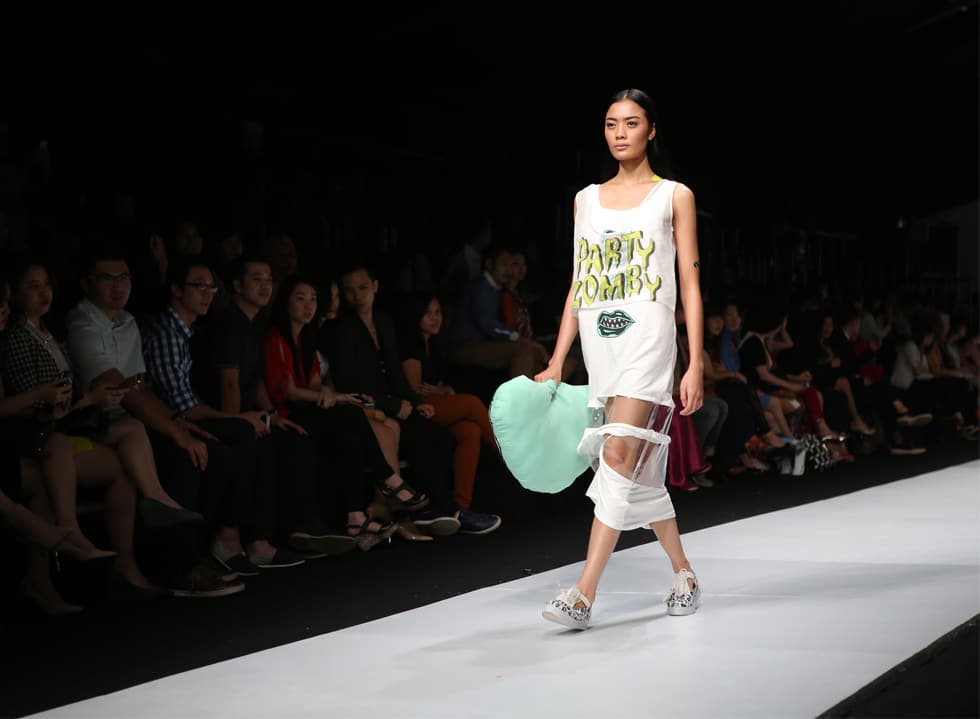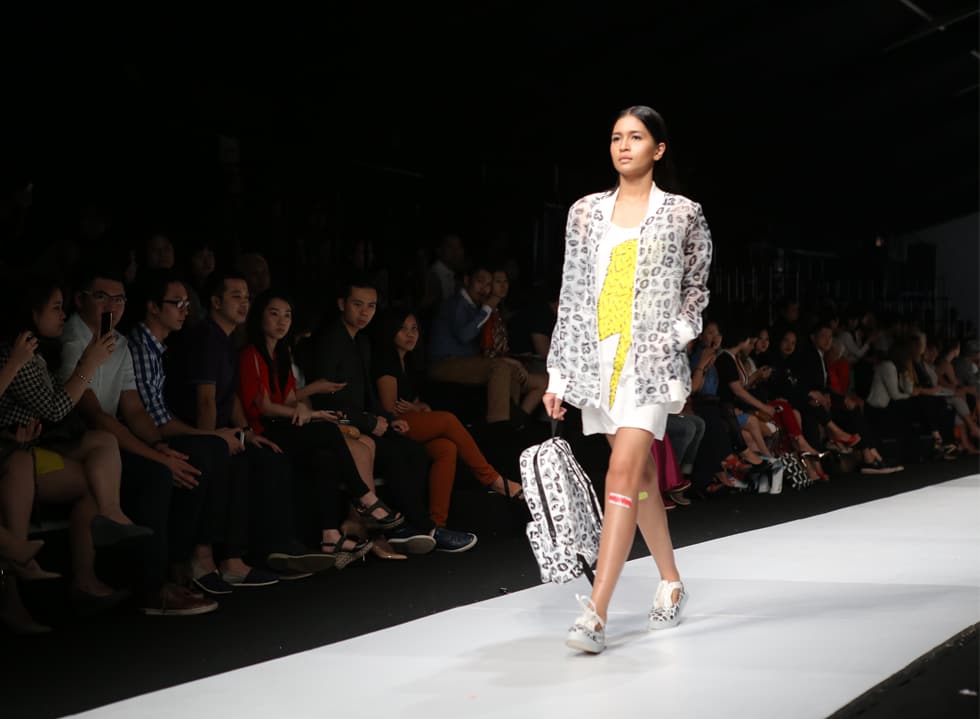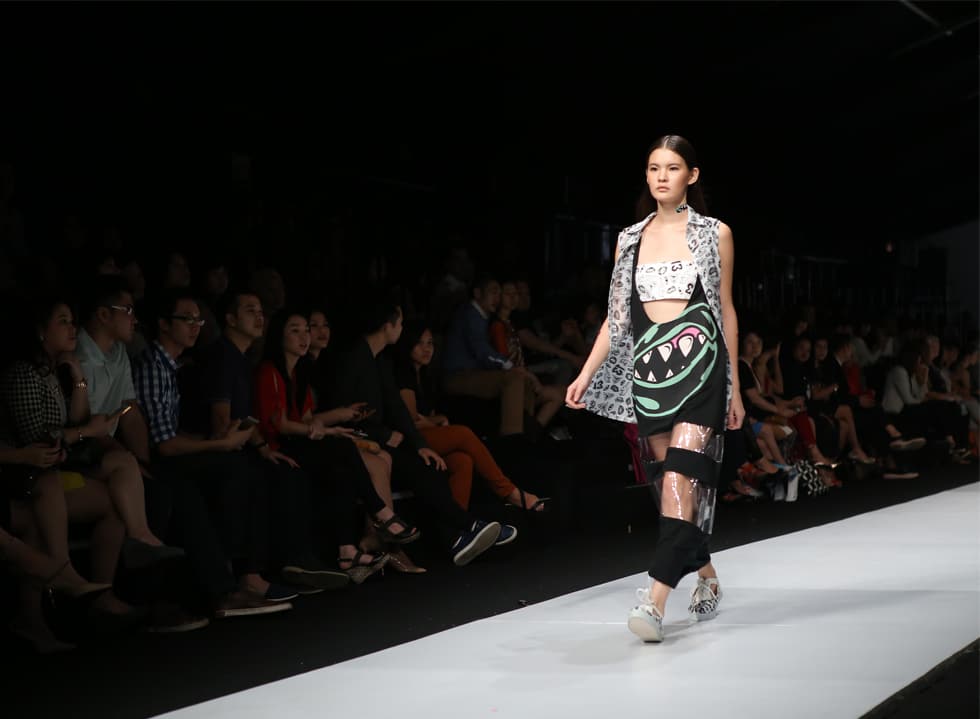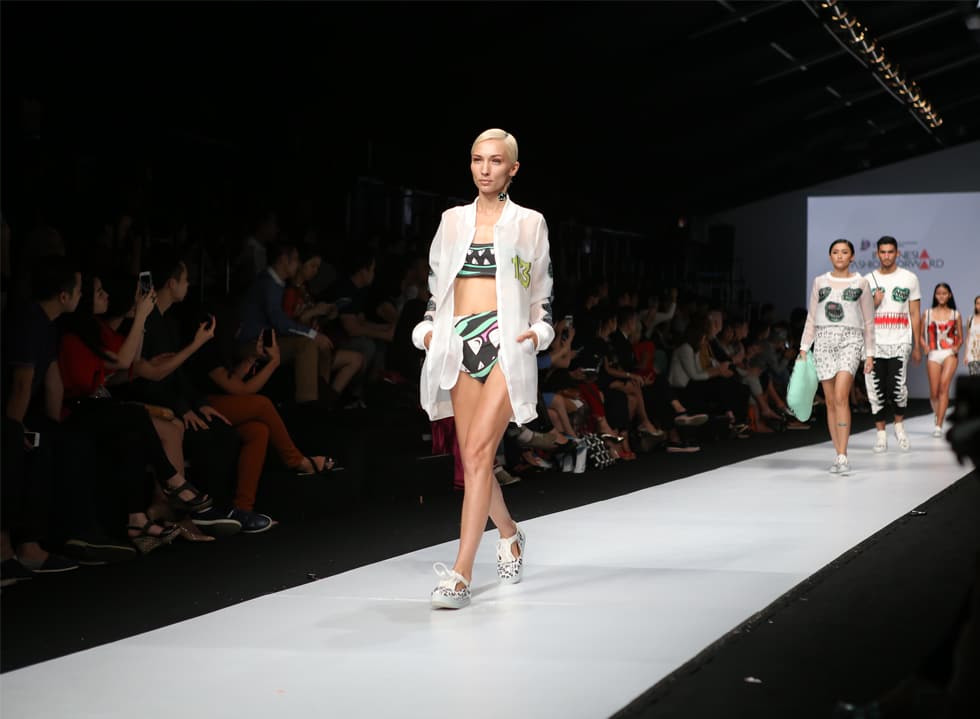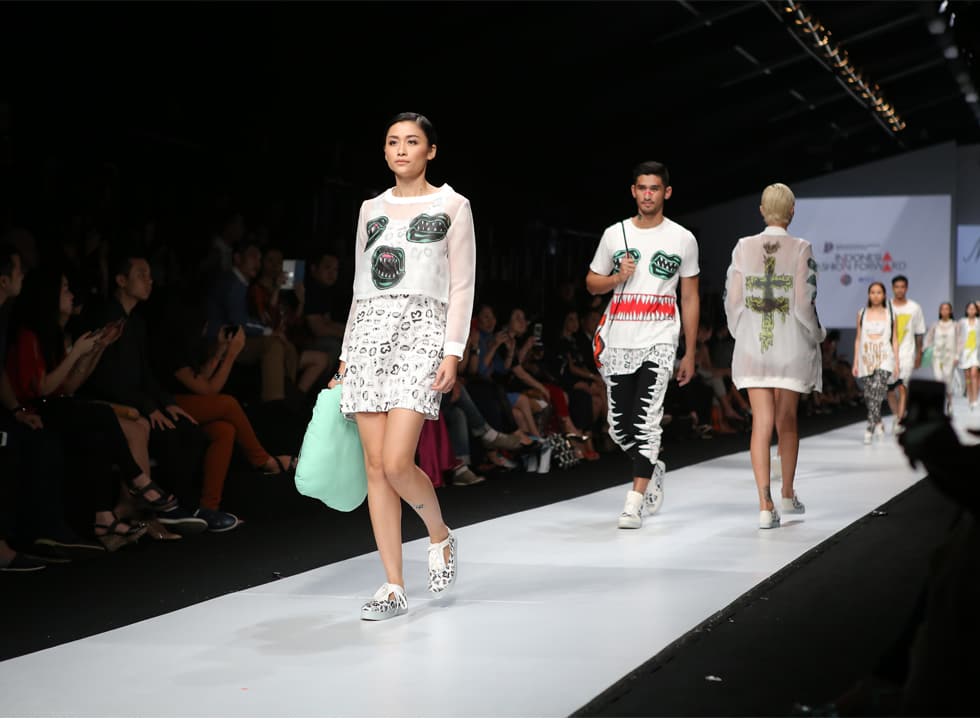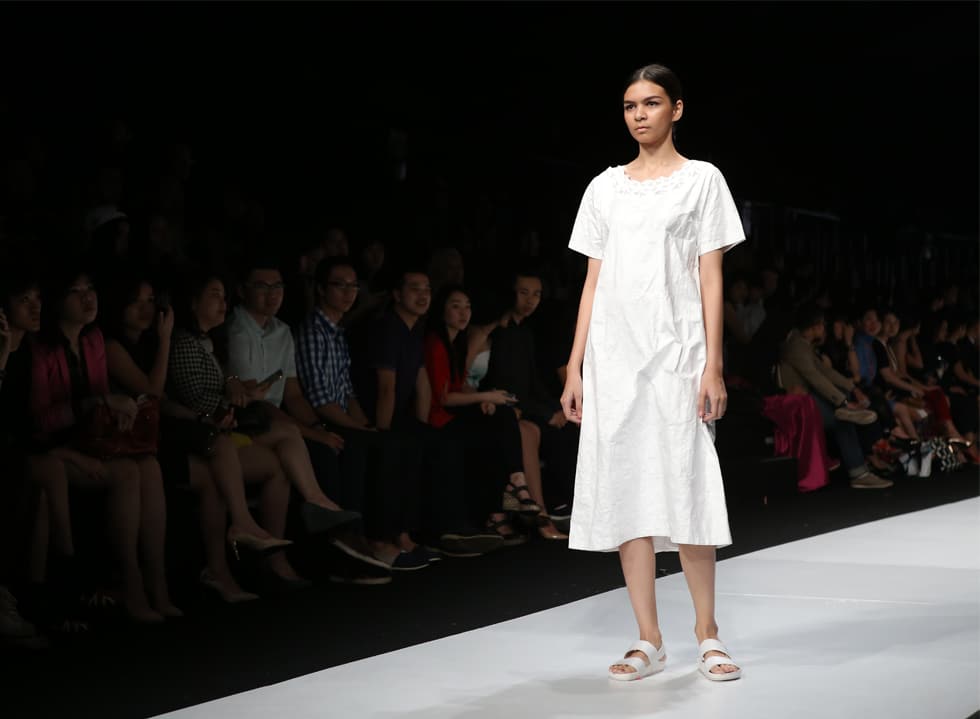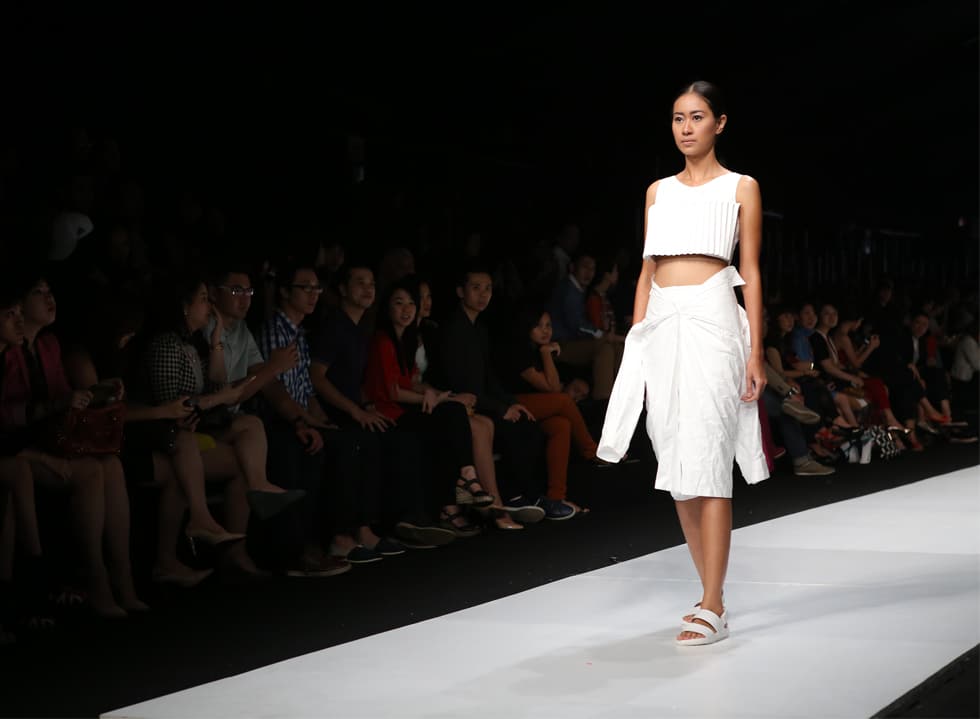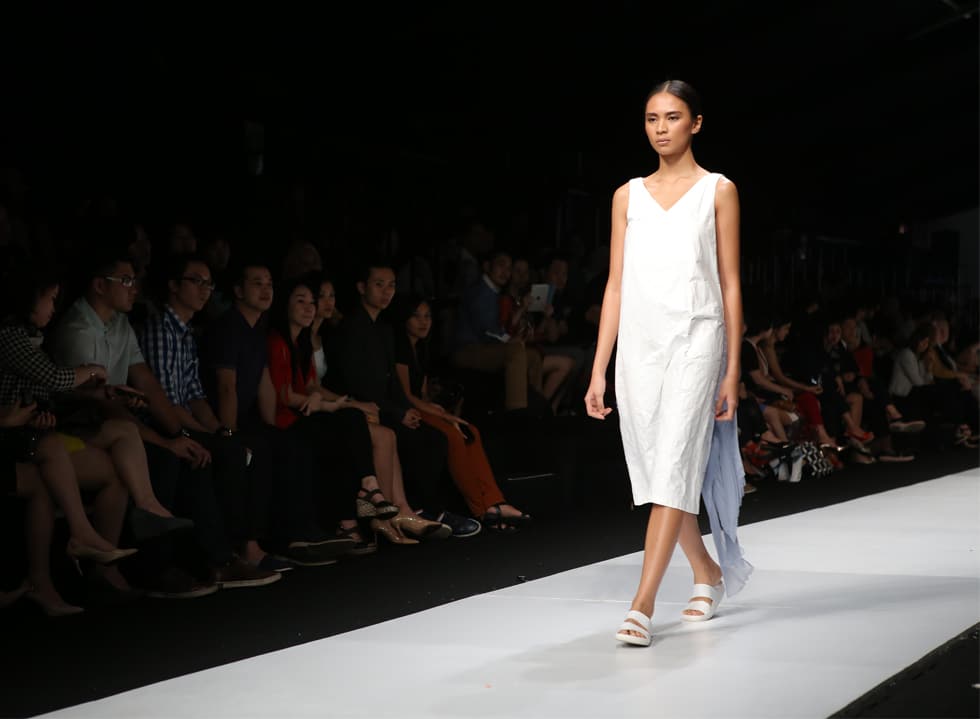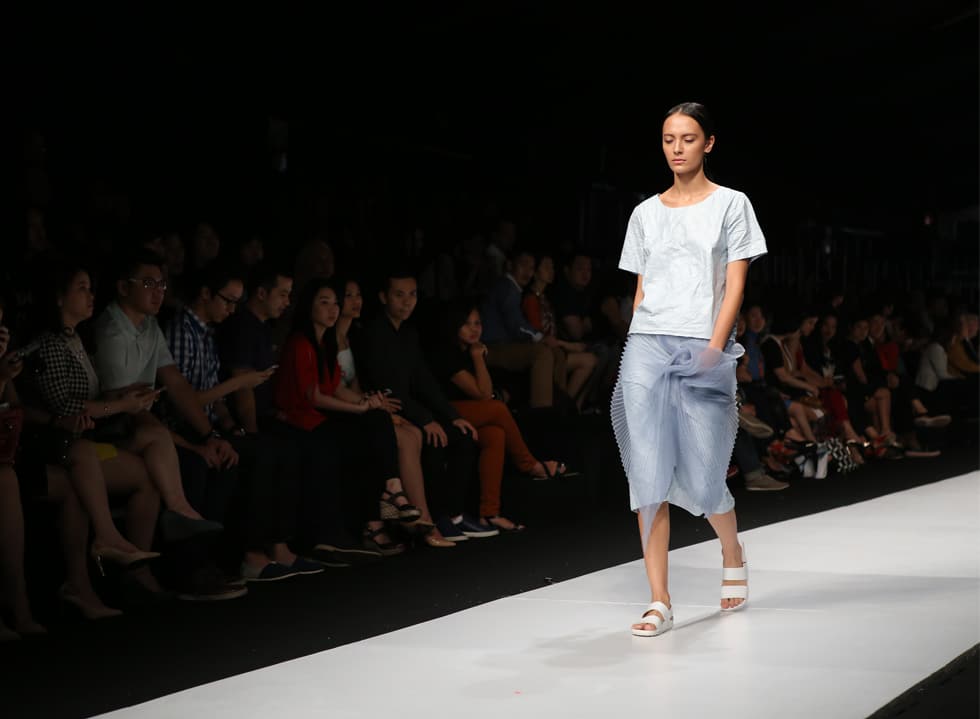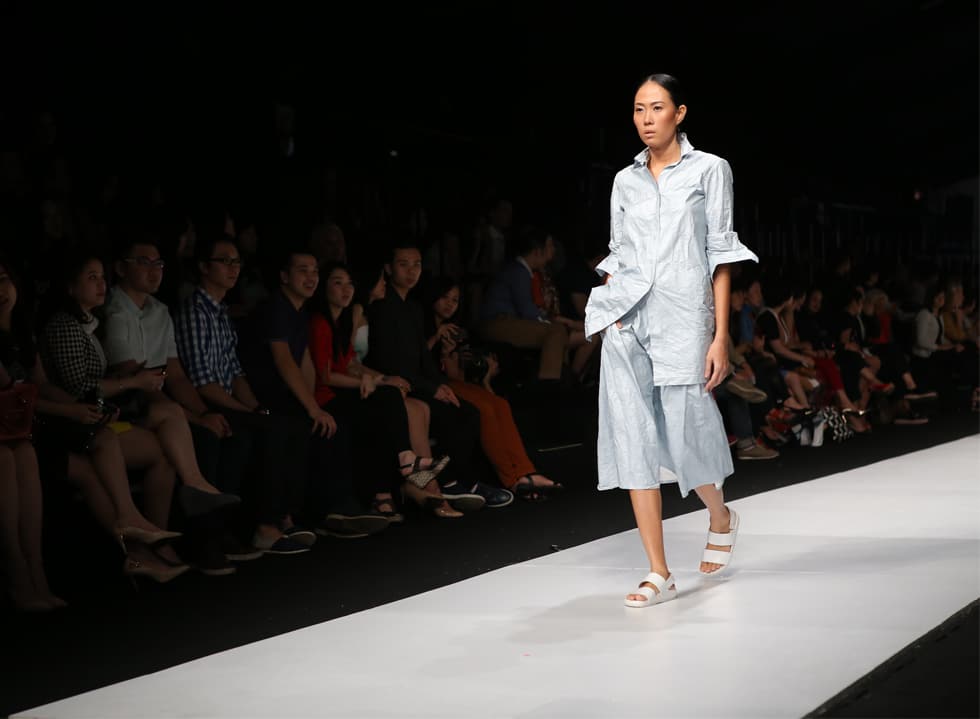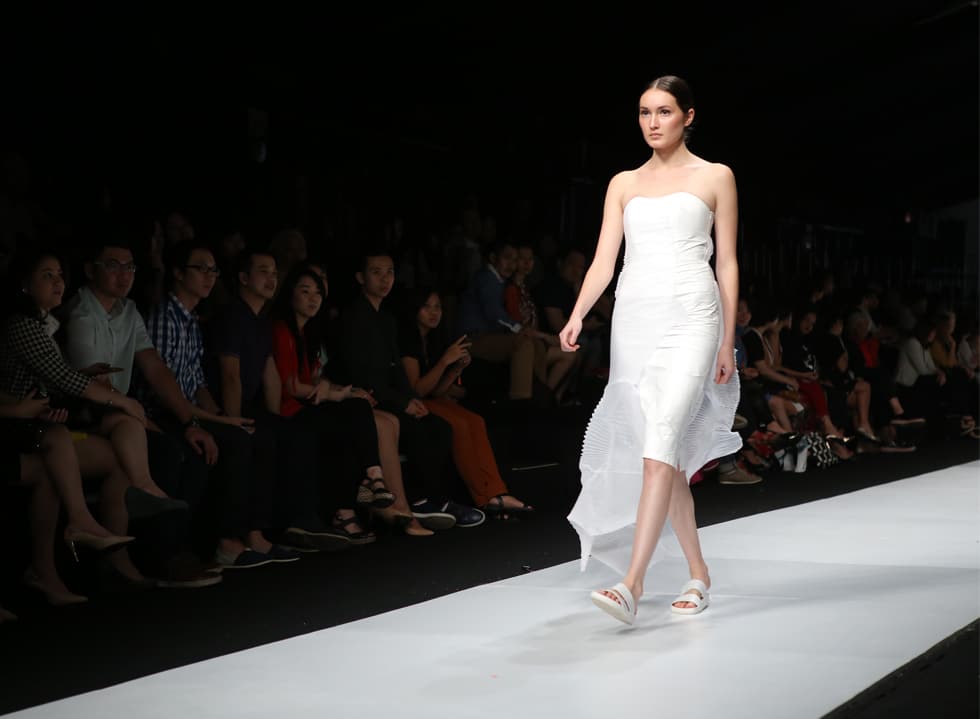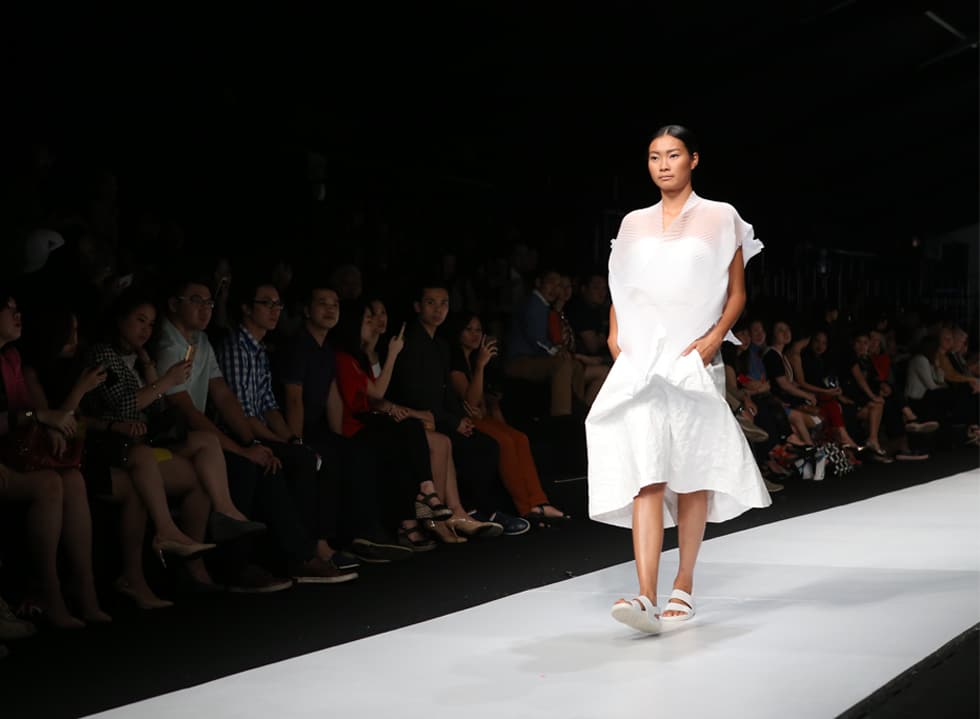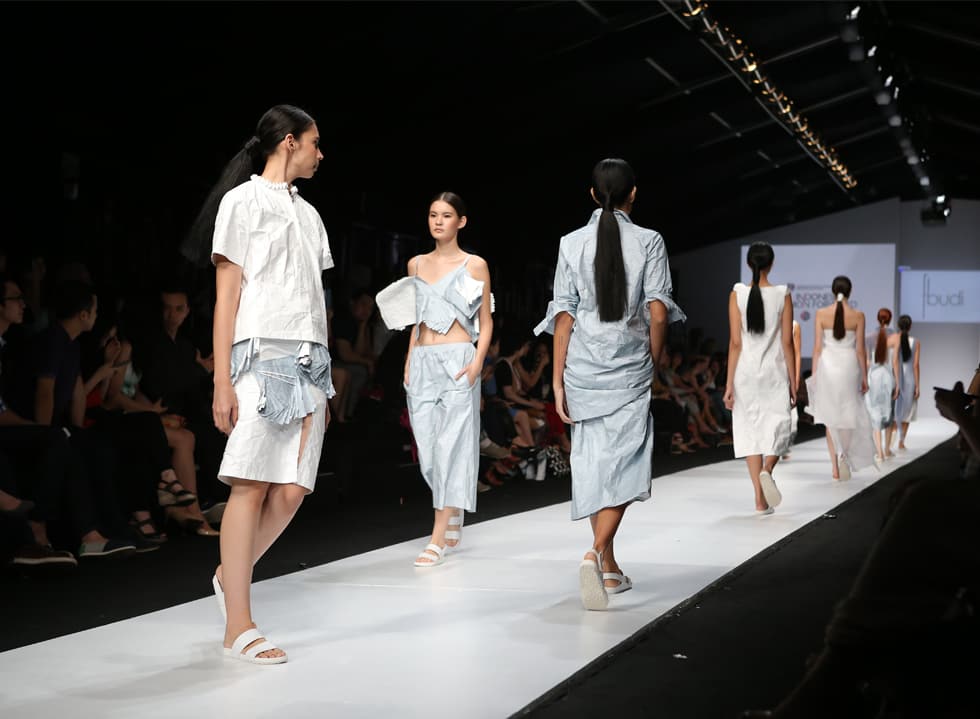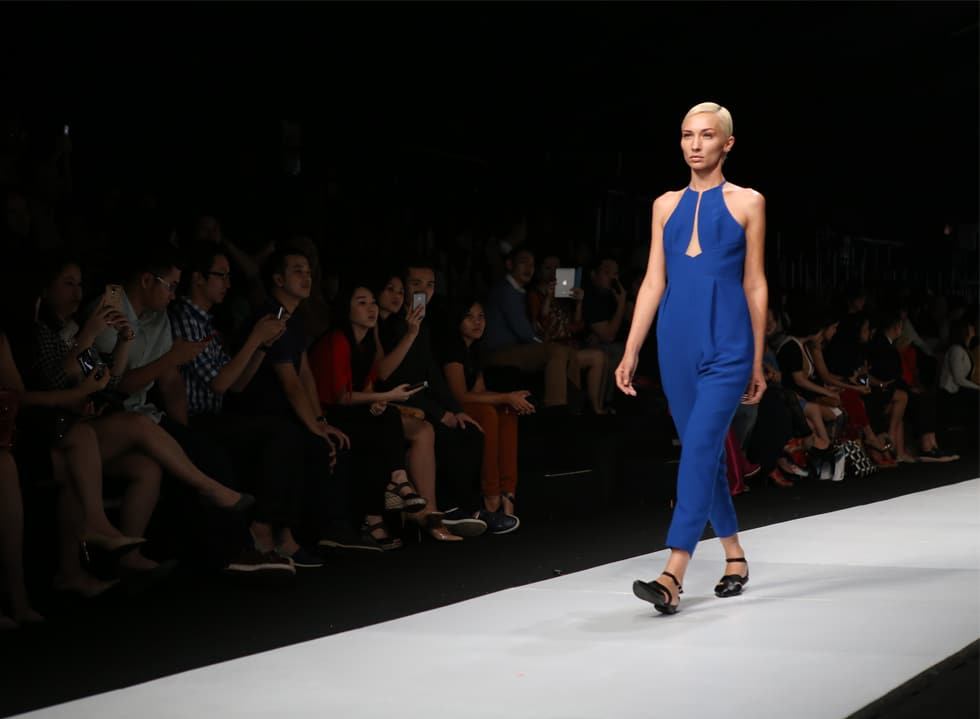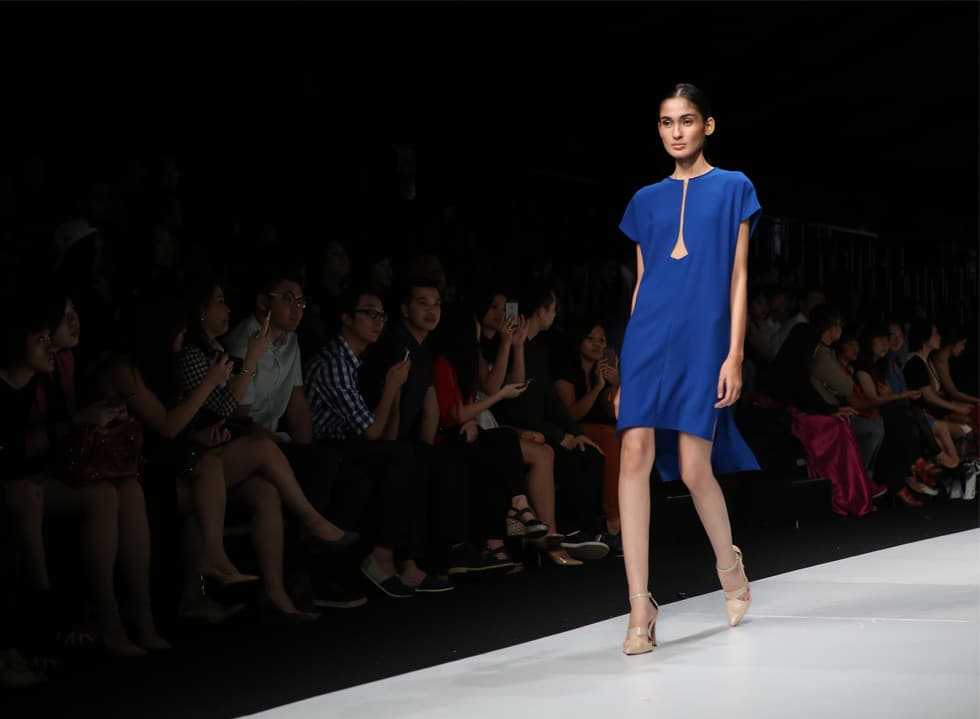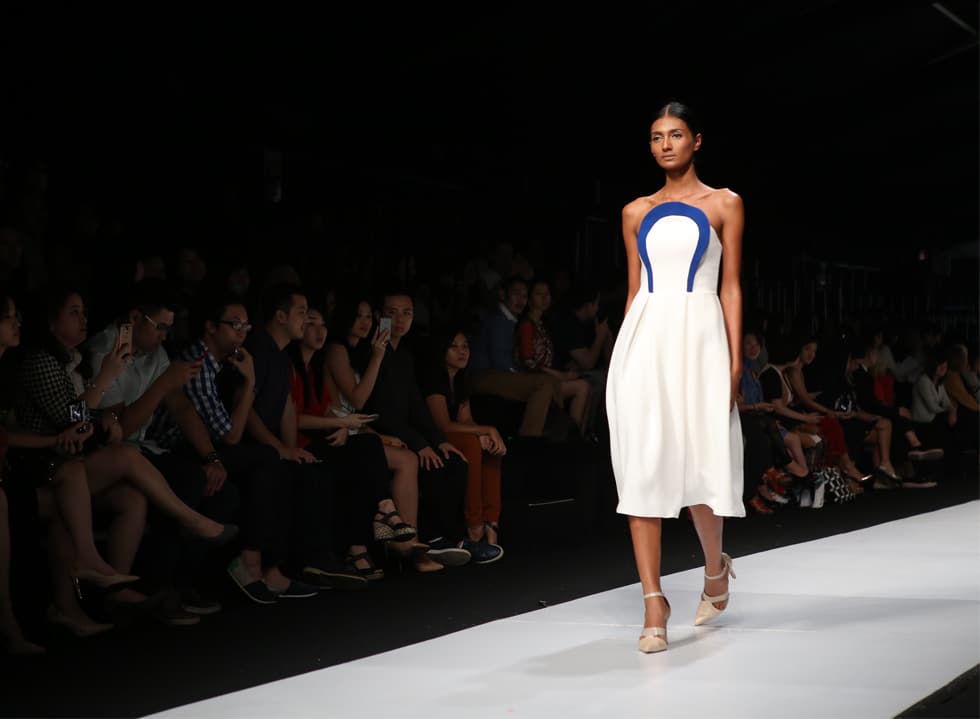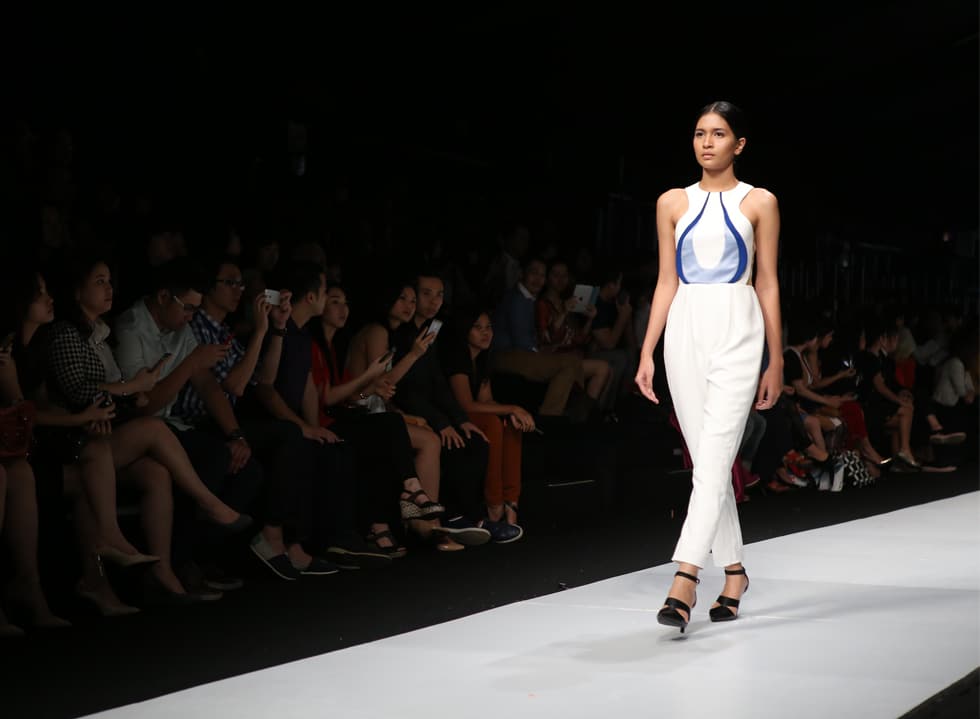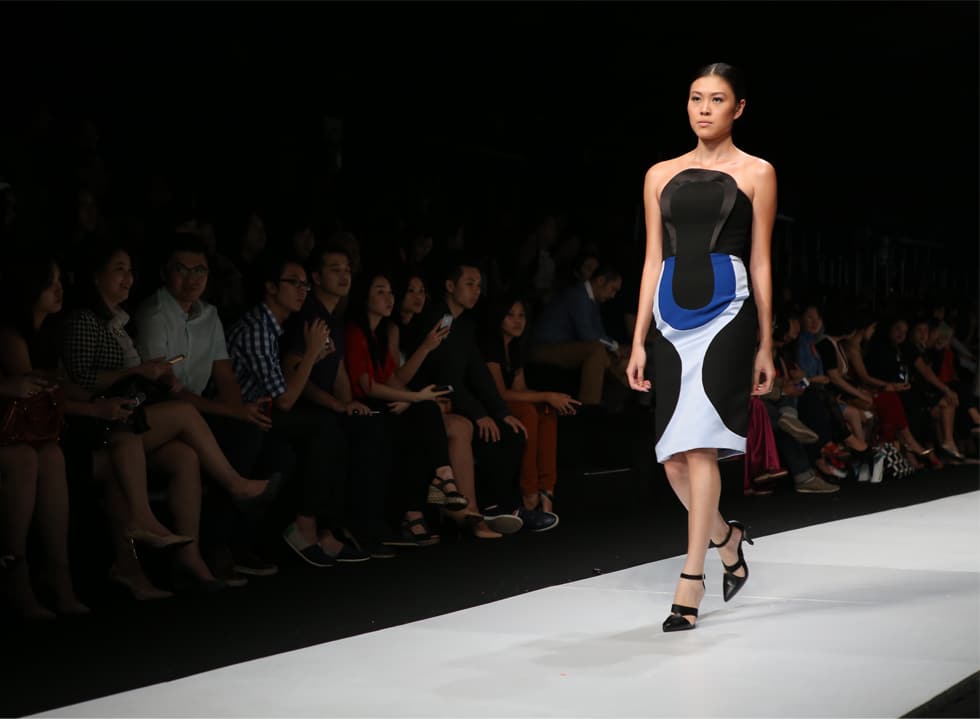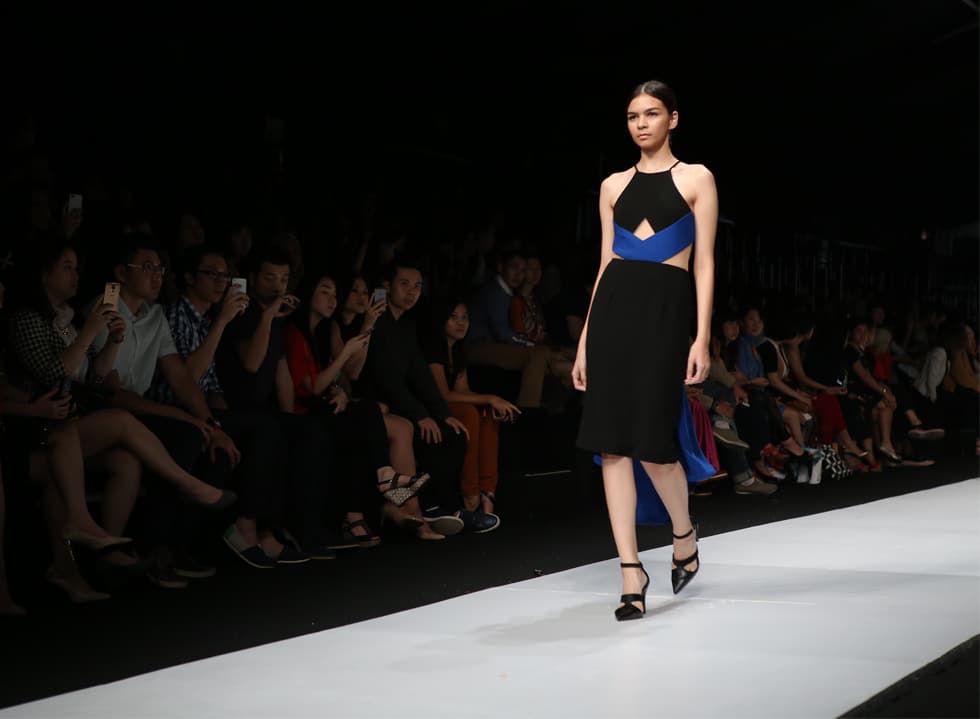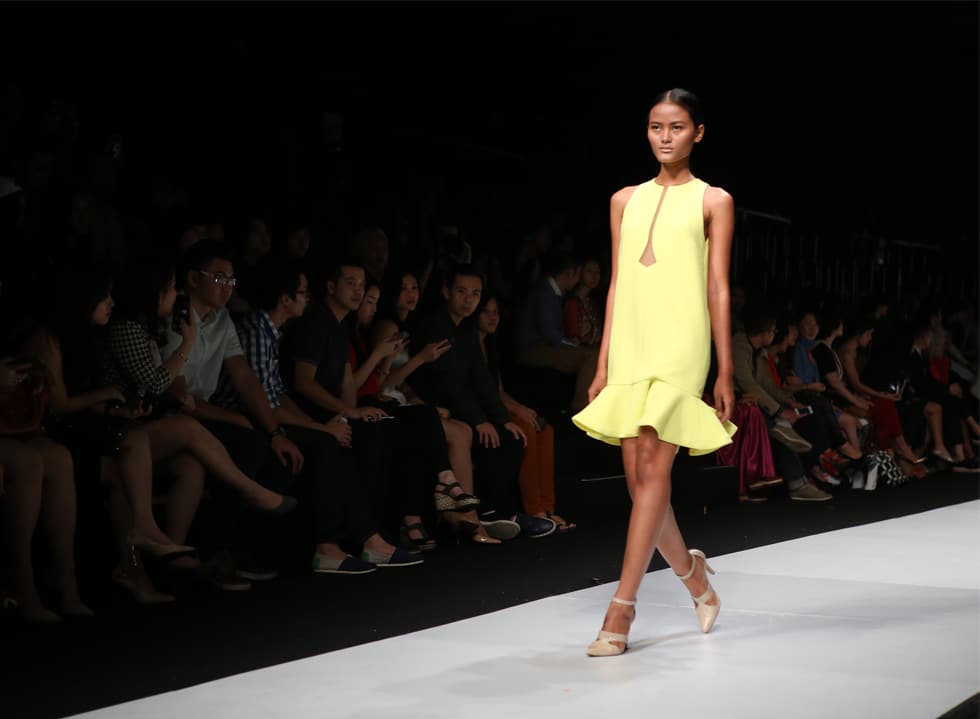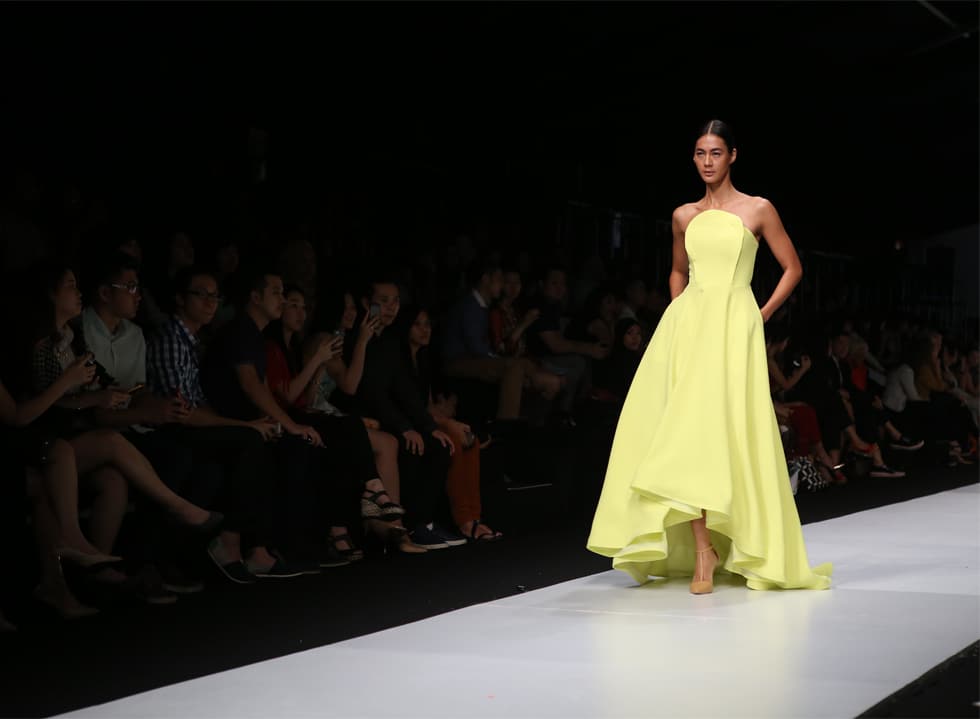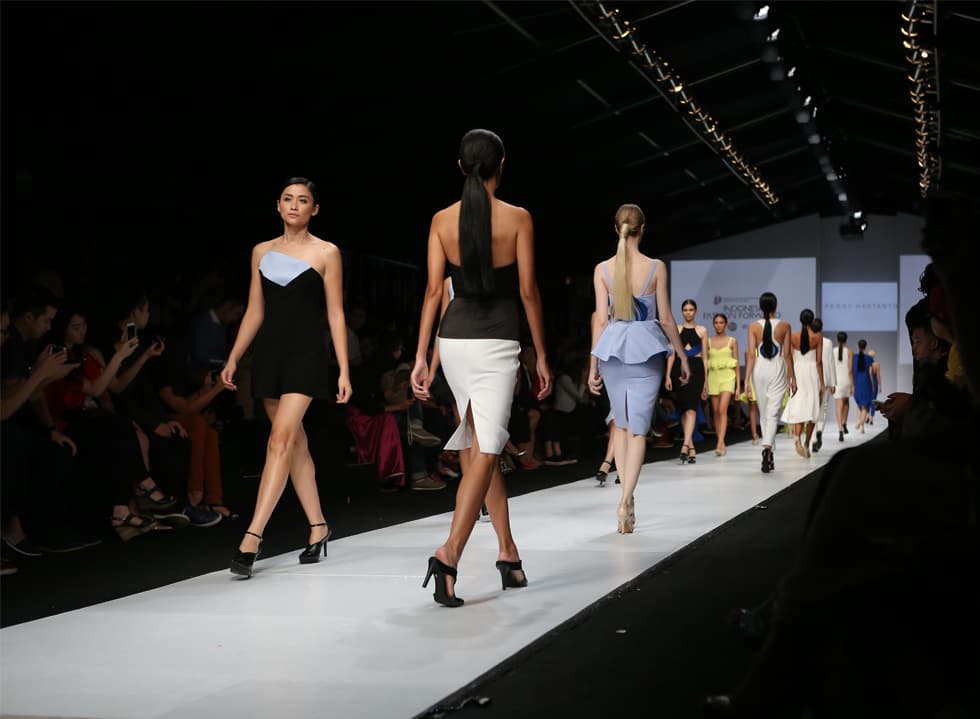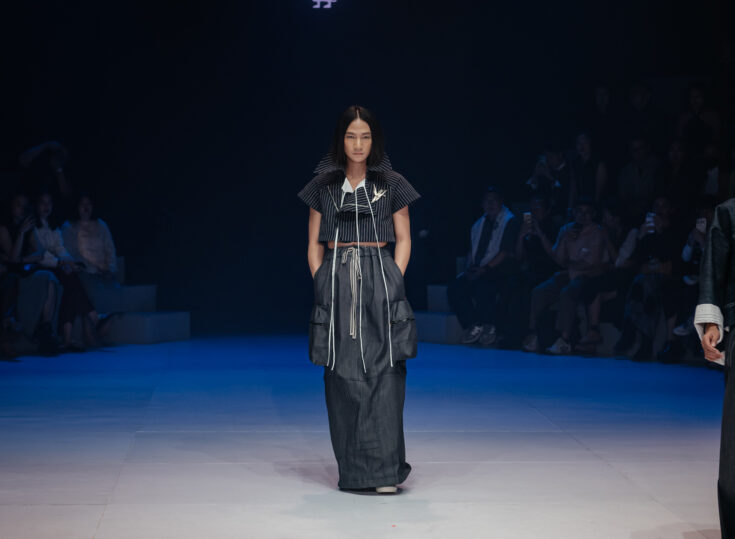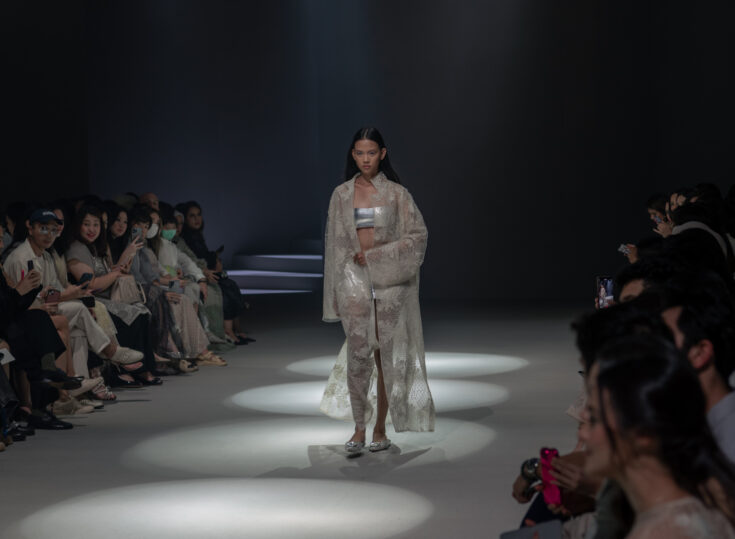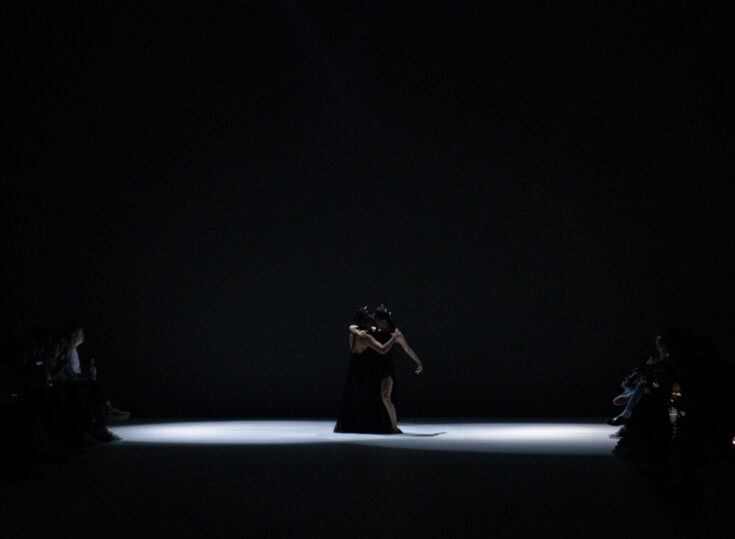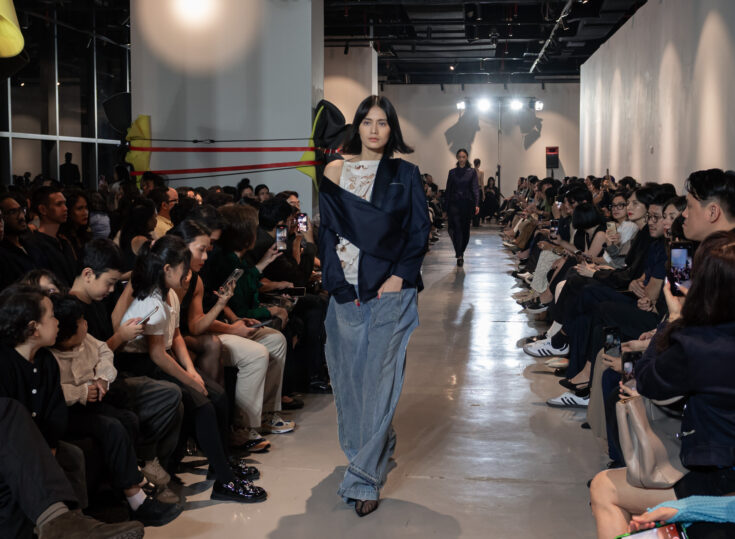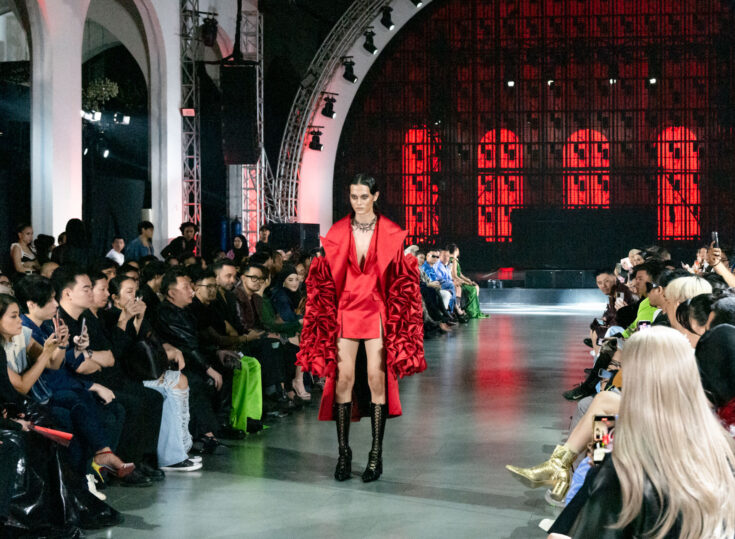Jakarta Fashion Week commenced with plenty of fanfare and anticipation. Streets were jam-packed with cars along with individuals who dressed up for the occasion. Not only that, the first day of Jakarta Fashion Week was also packed with significant shows. You figured just how much emphasis were place on the first day when upcoming labels like fbudi and Peggy Hartanto showed on the same day alongside established names, such as Sapto Djojokartiko and Tex Saverio.
Monstore displayed the power that comes with the feeling of being young at heart. Read: Power of Youth. That means one can basically show up in a bra top and grandma-panty shorts with see-through jacket and get away with it. The collection is imbued with the influence of street culture’s nonchalant swagger. These are clothes you wear to show up at, say, a local music festival equipped with a “fuck-it-all” attitude while high-fiving your group of cool as cucumber friends. Models also walked out with knapsack bag and clutched at soft cushion. Wait, what? Never mind, as mentioned before, youth gives one the license of getting away with things without being questioned.
It is interesting to dig deeper and get a grasp on what Felicia Budi (fbudi) and Peggy Hartanto (Peggy Hartanto) put forward for the young modern women with their collections. On one hand, it’s interesting because the aesthetic direction of Felicia and Peggy varied greatly from each other. On the other hand, even though those two are poles apart, both strive to bestow dignity to their wearers. In this case, the women.
In fbudi, the experimentation on unorthodox fabrics has allowed Felicia to reap great outcomes. The collection’s focal point was built on Tyvek (a synthetic material that resembles crumbled paper) and pleats. Among them are Tyvek skirt with sleeves that hugged the lower body like a boyfriend’s shirt tied to the waist and a simple v-neck Tyvek sheath dress with sheer pleated “cape” that spilled out softly at the back. It’s also fascinating to see the fabrics move as if with a life of their own. The pleats bounced delicately and Tyvek fabric formed abstract shapes as the models breezed by.
It’s apparent that the collection, with its experimentation and unconventional fabrics, was driven by the women’s intellect. But that doesn’t mean the collection lacked sex appeal. To wit, a spaghetti strap top is attached with, what seemed to be, layers of delicate papers “stapled” together at the sides that opened up to reveal the bosom when in motion. In short, Felicia deftly showed a collection that appeal to modern women who value the involvement of intellectual with a touch of sensuality in their everyday wardrobe.
On the other side of the ring, Peggy Hartanto presented a collection that is loaded with sex appeal. But don’t get it wrong; it is not the kind of sex appeal where “women bend down to pick up their pens” in order to acquire what they want. At least not just with their body but their mind as well.
It was a collection filled with body-hugging tops, bottoms and dresses meant for women who work. Power dressing for women has always been automatically associated and represented by big, bold padded shoulders. Peggy picked up that symbolism and interpreted it with her own way: shoulders are exposed with strapless bustier dress.
By exposing the shoulders, it was a subconscious and liberating message that suggests women no longer need to cover themselves in order to be perceived as powerful and intelligent. Of course, even with all that exposure, Peggy managed to keep it tasteful by dropping the hemline to over the knees. Apart from exposed body parts, the feminine component of the collection was also elevated with inspiration by the biology of flower – inner parts of flora were shown in abstract organic shapes over the bust of the dress.
Felicia and Peggy have cleverly demonstrated that intelligence and sex appeal don’t have to be mutually exclusive. To them, a woman’s decision to be taken seriously doesn’t mean sacrificing intelligence for sex appeal or vice versa. As such, both fbudi and Peggy Hartanto collections were engaging because they proposed a new, albeit subtle, way of dressing for young modern women. Dressing not just the body but the mind as well.
